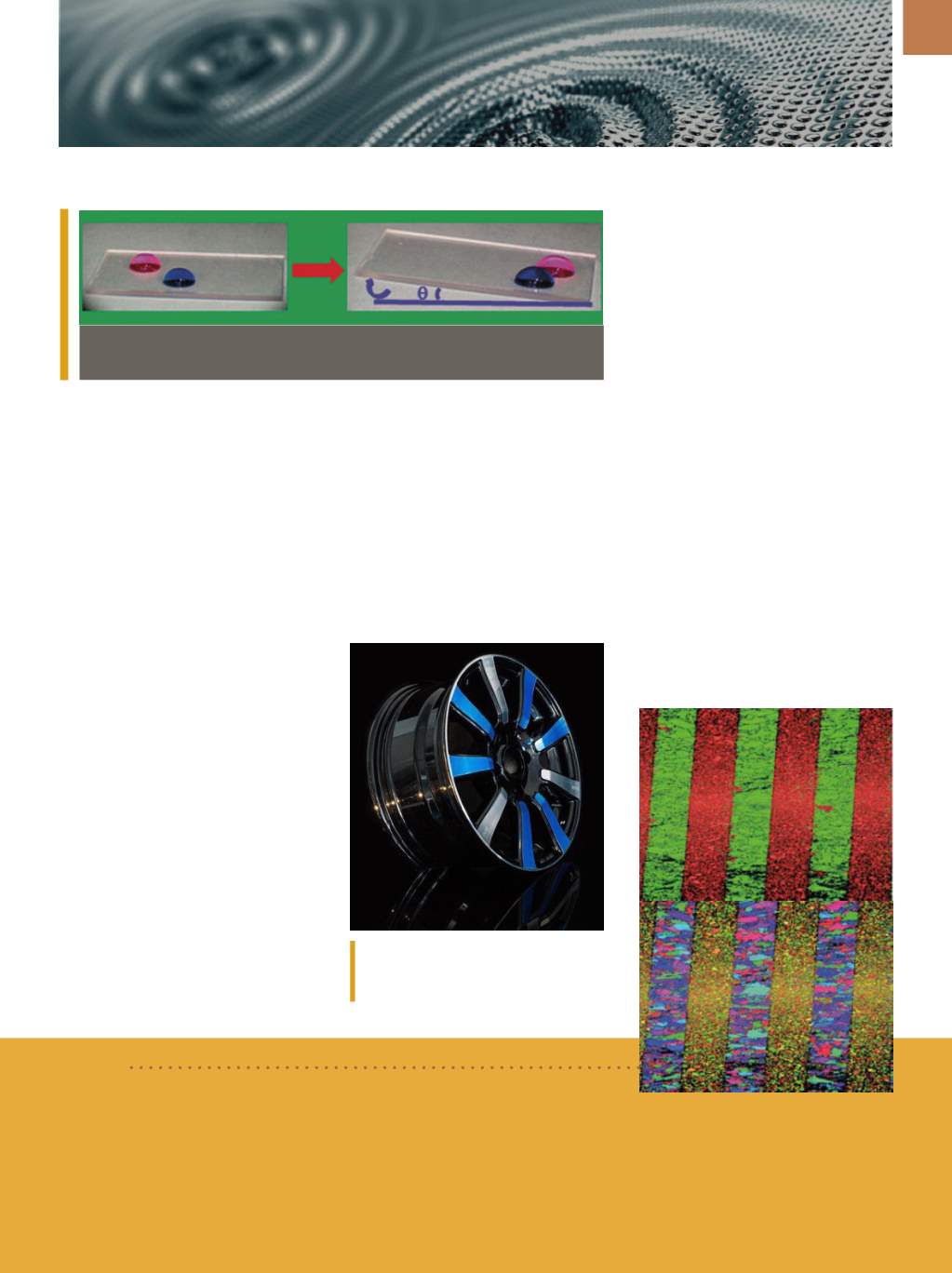

A D V A N C E D
M A T E R I A L S
&
P R O C E S S E S |
N O V E M B E R / D E C E M B E R
2 0 1 5
1 5
SURFACE ENGINEERING
NEW COATINGS
RESIST STAINS
Scientists at Queen’s Universi-
ty, Canada, introduced a new method
for producing transparent, smudge-
resistant coatings. The new approach is
fluorine-free and based on polyurethane,
an inexpensive type of plastic that ad-
heres well to a wide variety of surfaces.
The coatings remain clear at layer thick-
nesses of tens of micrometers and repel
both aqueous and oily contaminants.
The success of this new coating
stems from grafted side chains made
of poly(dimethylsiloxane) (PDMS), a
biocompatible silicone oil used in med-
icine. Individual components and con-
ditions for the synthesis were chosen to
produce a highly cross-linked polyure-
thane matrix in which nanodomains of
PDMS are embedded. At the surface, the
silicone side chains form a thin lubricat-
ing liquid film. When another liquid is
dispensed on the surface, it readily slips
off because the lubricating thin liquid
film cannot grab the liquid.
For more in-
formation: Guojun Liu, 613.533.6996 ext.
78755,
guojun.liu@chem.queensu.ca,
www.queensu.ca.
GLASSLIKE COATINGS
PROTECT AND ENHANCE
AUTOMOBILES
Researchers from INM—Leibniz In-
stitute for New Materials, Germany, de-
veloped new automotive coatings that
have glassy and glass-ceramic proper-
ties, reducing corrosion and wear, sus-
ceptibility to scratching or tarnishing,
and other processes of oxidation on
Fluorine-free, anti-smudge polyurethane coatings are transparent and durable.
Courtesy of Wiley-VCH.
BRIEF
Researchers at the
University of Twente,
the Netherlands, show that by
growing magnetic layers on various 2D crystals, or nanosheets, the preferred
direction of the magnetism can be locally controlled. Nanosheets can be
made in less than a minute, in contrast to the traditional synthesis process,
which is very slow. Magnetic films have many potential applications includ-
ing the latest smartphones.
www.utwente.nl/en.EBSD image shows local structure of a thin
film: The top image shows preferred direc-
tion of the LaSrMnO
3
-filmperpendicular
to the growth direction, while the bottom
image shows the directions in the plane with
contours of the individual nanosheets clearly
visible.
Glasslike coatings for automotive parts
offer both protection and vibrant color.
Courtesy of INM.
surfaces. To complement these pro-
tective properties, depending on the
choice of color pigments, the meth-
od can be used to produce red, black,
green, white, and blue coatings for dec-
orative purposes with stability at high
temperatures. These functional coat-
ings are suitable for metallic substrates
such as steel, aluminum, and alloys,
and may be used as a protective layer
for glassy components.
Special silicates are used for the
coatings and are converted into a sol-
gel nanocomposite in a single-step re-
action. Depending on the color pigment
and substrate, surfaces can be hermet-
ically sealed from 200° to 800°C. Layer
thickness ranges from 2–10
μ
m. Curved
and flat surfaces can easily be covered
with the coating in immersion cham-
bers or spray booths.
www.leibniz-inm. de/en.

















